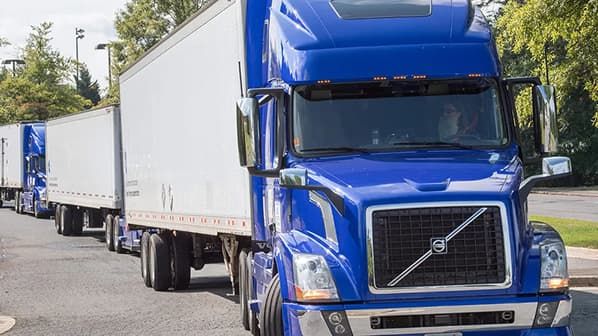Buying a teenager their first car has been a tradition for years, with safety, cost, and reliability weighing in the decision. Lately, though, there is a new contender: the used electric car, or EV. Sold in the past mostly to environmentally friendly adults, older EVs are now hitting the used car market at prices comparable to traditional high-mileage gas-powered cars. But is one of these silent, battery-sucking cars the perfect first vehicle for a new driver?
A Brief Guide to Construction Jobs

Prices Fall, New Choices
Early EVs lose their value quickly like few cars do. A 2017 Nissan Leaf with a sticker price that came close to $30,000 can be purchased for under $10,000 today—well less than a comparably aged compact gasoline-powered sedan. This opens up unexpected possibilities to families: a teenager can start out not with a tattered 150,000-mile Toyota Corolla but with a cool hatchback that is modern in its interior. The Chevrolet Bolt EV, introduced in 2017 with a 238-mile certified range, is one such example. Though newer EVs make it look obsolete today, on the used car market the Bolt has no trouble sitting comfortably within the $12,000–$15,000 bracket, within what most American families would consider a “first car budget.”
Safety Built into the Design
Parents naturally gravitate towards safety. A number of electric cars have low centers of gravity, since their heavy battery packs are mounted below the floor, reducing the risk of rollovers and improving handling. They have tended to score well in crash tests, too: the 2017 Chevrolet Bolt was named a Top Safety Pick by the Insurance Institute for Highway Safety, and even the smaller Nissan Leaf performed well in government crash tests. Advanced safety features such as automatic emergency braking and pedestrian detection, which came on EVs in the late 2010s, give them an edge in the safety equation compared with equivalent-priced gasoline cars.
Living Within Range Constraints
Range is where things become problematic. First-generation Nissan Leafs struggle to make 70 miles on a charge now, especially in colder states where batteries don’t hold up as long. For most teenagers, that’s plenty—it gets them home from high school drives, after-school part-time jobs, or short weekend trips. In fact, the limitation might assuage parental fear by keeping spontaneous drives across states at bay. But with limitations are another matter: in rural or regions lacking decent charging infrastructure, such limitations can be rather agony. Later models, such as one from 2019 of the Hyundai Kona Electric with more than 200 miles of range, offer more flexibility, although at a higher price.
Maintenance and Battery Risks
One of the biggest selling points of EVs is that they have less maintenance. No oil substitutes, long-lasting brake pads as a result of regenerative braking, and reduced drivetrain moving parts all reduce the likelihood of failure—a nice consideration for parents who understand that a teenager will inevitably forget regular maintenance. The only sophistication is with batteries. When most manufacturers offered eight-year warranties, one issue was that the warranties would lapse at the time vehicles are teen-priced used vehicles. The main pack on an older Leaf needs to be replaced for $6,000 or more, which is more than the car itself is worth. For families that plan on keeping the vehicle for just a few years, though, the gamble is usually worth it.
Charging: Simpler or More Difficult?
For teens living in garage homes, overnight charging can be simpler than filling up at gas pumps. Even a common 120‑volt home wall socket gives 40–50 daily miles of driving, ample for most new drivers. However, all teens don’t have such easy conditions. Even if there are cost savings elsewhere, without off-street parking in an apartment building or condominium, the inability to charge can make an EV an impractical option.
The Bottom Line
So, then, is a used EV the best first car for teens? It depends on circumstances. In a suburban home with a garage, short daily drives, and an interest in safety and technology, the case for a used EV is a compelling one. But in rural settings, garages-less homes, or battery replacement cost-conscious families, a reliable gasoline vehicle may still be the wisest choice.


Guess you like
-

Smart and Affordable Elevator Choices for Homeowners
-

The Best Co-op Games for Every Type of Friendship Moment
-

The Most Addicting Apple Arcade Games of 2025
-

Why You Need to Try Interactive Movie Adventure Games
-

Your Chatbot AIs Could Soon Determine What You View on Facebook and Instagram
-

An In-Depth Analysis of the Most User-Rated Investment Advisor
Trending
-
 1
1Practical Diagnostics That Actually Work Before Your Next Router Purchase
-
 2
2A Bittersweet Return: Syberia Remastered Review
-
 3
3Electric Trucks Falter in the U.S. — The High-Stakes Struggle Behind the Wheels
-
 4
4Amazon’s New AI Tool Translates Kindle E-Books for Self-Published Authors
-
 5
5Stellantis, NVIDIA, Uber and Foxconn Unite on Level 4 Robotaxis
-
 6
6How to Upgrade Weapons and Workbenches in ARC Raiders


